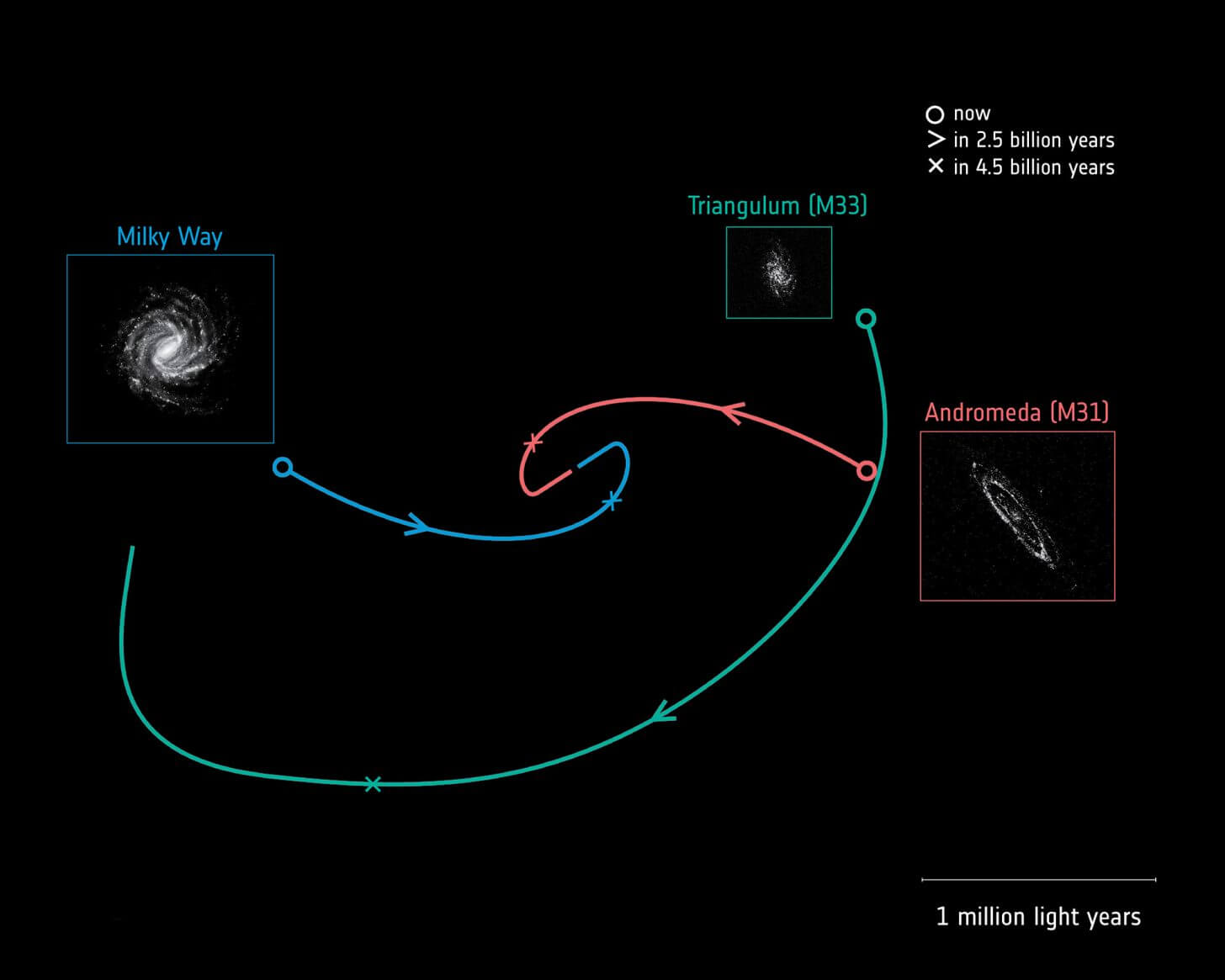Looking outside our galaxy, the ESA Gaia space telescope explored two nearby galaxies and how they would one day interact and collide with the Milky Way. The result was surprising results.
The Milky Way belongs to a large group of galaxies, known as the Local Group, and together with the spiral galaxies of Andromeda (M31) and Triangulum (M33) make up most of its entire mass. Both galaxies are located at a distance of 2.5-3 million light-years from us and are close enough to each other so that they can interact.
Astronomers have long suspected that Andromeda would one day collide with our galaxy, completely changing the cosmic neighborhood that we are used to. However, the three-dimensional motion of the galaxies of the Local Group remained unclear, drawing an uncertain picture of the future of the Milky Way.
We needed to explore the movements of galaxies in 3D in order to uncover how they grew and developed, as well as their characteristics and behavior. We were able to do this using the second high-quality data package released by the Gaia mission.
-Roland van der Marel, lead author of the research from the Space Telescope Science Institute in Baltimore (USA)
At present, the Gaia mission, which measures the individual position and movement of stars with unprecedented accuracy, is building the most accurate three-dimensional map of the stars of the nearest Universe, releasing data in stages. The basis of this study formed the data that saw the light in April 2018.
The fate of the Triangulum and Andromeda
Two possible scenarios for the interaction of the Andromeda and Triangulum galaxies were previously assumed: either the Triangulum galaxy is in an incredibly long 6 billion orbit around Andromeda and has already met it in the past, or it is currently making the first approach to it. Each variant reflects a different orbital path and, therefore, a different formation history and future of each galaxy.
We looked at the Gaia data to identify thousands of individual stars in M31 and M33, and studied how these stars moved in their galactic homes. The stellar movements, measured by Gaia, show not only how each of the galaxies moves in space, but also how they rotate.
-Marc Fardal, co-author of the research from the Space Telescope Science Institute in Baltimore
Combining existing observations with the new release of Gaia data, the researchers determined how Andromeda and Triangulum move across the sky, and calculated the orbit trajectory for each galaxy both backward and forward in time by billions of years. As a result, it turned out that the M33 cannot be in a long orbit around the M31, but on the contrary is currently moving towards its first approach to Andromeda.
We see unusual features in both M31 and M33, including curved streams and tails of gas and stars. If galaxies were not previously encountered, they were formed as a result of their own gas dynamics or interaction with other galaxies.
-Timo Prusti, co-author of the study and researcher of the Gaia project
What about the future of the Milky Way?
Although according to new data, our Galaxy and Andromeda are still destined to collide and merge, both time and the way of interaction differ from those previously expected.
The Andromeda movement is somewhat different from previous estimates. The galaxy is likely to deliver a sliding blow to the Milky Way, rather than a head-on collision, and this will happen not in 3.9 billion years, but in 4.5 billion, which is about 600 million years later than previous estimates. This conclusion is crucial for understanding the development and interaction of the Local Group galaxies.
The Gaia Space Observatory was designed primarily for mapping stars in the Milky Way, but a new study shows that the satellite exceeds expectations and can provide unique information about the structure and dynamics of galaxies outside our stellar home.
The future of the Milky Way galaxy
Click To Tweet
The post The future of the Milky Way galaxy appeared first on Upcosmos.com.
